

The Aquaculturists: 01/08/2014: Deep-sea cameras reveal commercial fisheries having little impact on seafloor. These Fishermen Make 'Sea Chairs' From Plastic They Haul In... While They're Still Fishing. Social Octopus Species Shatters Beliefs About Ocean Dwellers. New to Nature No 128: Aetobatus narutobiei. Global Aquaculture News & Events. 14/05/14: Evaluating Relationships between Wild Skeena River Sockeye Salmon Productivity and the Abundance of Spawning Channel Enhanced Sockeye Smolts. The enhancement of salmon populations has long been used to increase the abundance of salmon returning to spawn and/or to be captured in fisheries.
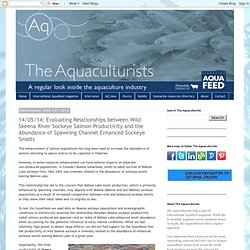
However, in some instances enhancement can have adverse impacts on adjacent non-enhanced populations. In Canada's Skeena watershed, smolt-to-adult survival of Babine Lake sockeye from 1962–2002 was inversely related to the abundance of sockeye smolts leaving Babine Lake. 28/03/2014: Salmon sales from Scotland up significantly.
8/11/13: Algae Congress boosts budding industry. The 7th International Algae Congress gets underway in Hamburg, Germany on December 3-4, with a special emphasis on applications for aquaculture and agriculture.
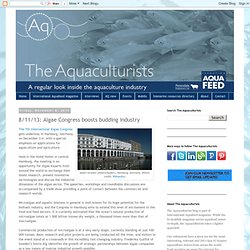
Held in the Hotel Hafen in central Hamburg, the meeting is an opportunity for algae experts from around the world to exchange their latest research, present innovative technologies and discuss the industrial dimension of the algae sector. The speeches, workshops and roundtable discussions are accompanied by a trade show providing a point of contact between the commercial and research worlds. Microalgae and aquatic biomass in general is well-known for its huge potential for the biofuels industry, and the Congress in Hamburg aims to extend this level of excitement to the food and feed sectors. Next coastal razor clam digs get the green light to begin Nov. 1. The next series of coastal razor clam digs were approved and set to begin on Friday, Nov. 1.
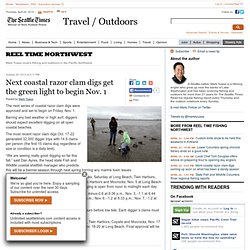
Barring any bad weather or high surf, diggers should expect excellent digging on all open coastal beaches. The most recent razor clam digs Oct. 17-22 generated 32,000 digger trips with 14.9 clams per person (the first 15 clams dug regardless of size or condition is a daily limit). 25/10/13: Chinese aquaculture gears up for symposium. 25/10/13: INVE Aquaculture unveils new hatchery expert. News fresh off the wire from INVE HQ: Earlier this year INVE Aquaculture, global leader in nutrition and health, strengthened its technical expertise by adding Randall L.

Sparking investment in aquaculture. Demand for fish continues at its insatiable rise.
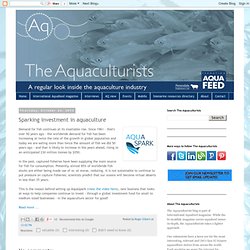
Since 1961 - that's over 50 years ago - the worldwide demand for fish has been increasing at twice the rate of the growth in global population and today we are eating more than twice the amount of fish we did 50 years ago - and that is likely to increase in the years ahead, rising to an anticipated 230 million tonnes by 2050. In the past, captured fisheries have been supplying the main source for fish for consumption. Presently, almost 85% of worldwide fish stocks are either being made use of or, at worse, reducing. It is not sustainable to continue to put pressure on capture fisheries; scientists predict that our oceans will become virtual deserts in less than 35 years.
This is the reason behind setting up AquaSpark (view the video here), new business that looks at ways to help companies continue to invest - through a global investment fund for small to medium-sized businesses - in the aquaculture sector for good! 16/10/13: Whole Foods interview, new Arapaima, microalgae research. 10/10/13: Brazilian macroalgae, Hawaiian tuna farms and pick your poisson. Hawaii Business magazine reports on Syd Kraul, a Kona aquaculturist aiming to raise the world’s first farm-raised yellowfin tuna.
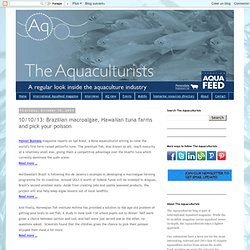
The premium fish, also known as ahi, reach maturity at a relatively small size, giving them a competitive advantage over the bluefin tuna which currently dominate the sushi scene. Northeastern Brazil is following Rio de Janeiro’s example in developing a macroalgae farming programme for its coastline. Around US$3.6 worth of federal funds will be invested in Alagoas, Brazil’s second-smallest state. Aside from creating jobs and usable seaweed products, the project will also help keep algae blooms out of local landfills. And finally, Norwegian fish institute Nofima has provided a solution to the age-old problem of getting your brats to eat fish.
8/10/13: Microalgae research, BC aquaculture developments, sea star epidemic. New research is pointing the way for the further development of microalgae-based aquaculture feeds.

FIS.com reports on the work of Dartmouth College, USA professor Anne Kapuscinski, whose findings on aquaculture’s “net removal of fish” from the oceans made waves earlier this year. The Fish Site reports today on a proposed aquaculture park in British Columbia, Canada. The project, which seeks to create over 200 skilled jobs in aquaculture by developing 100 acres of waterfront, is requesting C$2,500,000 worth of federal funds over the next five years. Staying in British Columbia, marine biologists in Vancouver are mystified by a wasting disease causing sea stars to literally disintegrate on the sea floor.
The starfish epidemic follows an unexplained population growth in the area, with some patches of seabed packed several sea stars deep. 10/09/13: Scottish salmon on the rise; distribution agreement between PHARMAQ and Skala Maskon; enhanced cultivation of tilapia can boost fish production. 09/09/13: FAO documents available as e-books; Canadian ministers agree aquaculture cooperation; cage found adrift. FAO has launched its Fisheries and Aquaculture document as an e-book.

Compatible with iPad, Kindle, Nook and Sony Reader, the e-books allow readers to highlight interesting passages, bookmark pages, make notes or search the full-text content with one click. The title, along with others focusing on agriculture and food, are available to download online. Fisheries ministers in Canada have committed to working together to benefit the country's aquaculture industry. In a meeting held in Quebec, the ministers discussed three challenges the fisheries and aquaculture industry faces: developing the lobster industry, protecting fisheries and preventing invasive aquatic species form entering Canadian waters. New BioMarine Clusters Association launched.
The biomarine industry, under the umbrella of the BioMarine Business Convention, has set up a new international association called BioMarine International Clusters Association (BICA).

It launched the BICA in Halifax, Canada, on September 9, 2013 as part of the 2013 BioMarine Business Convention. The biomarine industry is wider than just aquaculture and the organisers of BioMarine Business Convention, which is held annually in different locations each year, believe that there is significant synergy between the various marine-related industries such as energy, cosmetics, pharmaceuticals, etc to warrant an independent association. “The biomarine industry is an emerging economic sector based on biotechnology and marine bio-resources,” says Pierre Erwes, the chairman and co-founder of BioMarine Business Convention. “This new transversal industry sector brings a novel approach to economic growth and a large potential for new business opportunities and jobs. Founding members.
03/09/13: Algeria and China discuss aquaculture collaboration; extruded feeds in Bangladesh; mangroves in Malaysia. Algeria and China discuss aquaculture collaboration plans.Officials from both countries met to discuss the development of aquaculture in Algeria with technical assistance from Beijing.
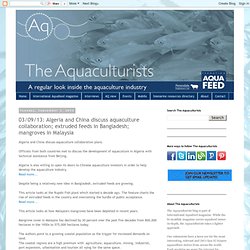
Algeria is also willing to open its doors to Chinese aquaculture investors in order to help develop the aquaculture industry.Read more... Despite being a relatively new idea in Bangladesh, extruded feeds are growing. This article looks at the Rupshi Fish plant which started a decade ago. High Value Aquaculture Finfish Symposium. Expo Pesca and Acui Peru. 01/09/13: EMS affects shrimp prices; New IMTA project in Norway; MSC programme in Poland. Shrimp prices have hit a record high in the USA and Europe as a knock on effect from early mortality syndrome (EMS) in China and southeast Asia, reports the Bangkok Post. EMS was first spotted in China in 2009 and has since spread to Malaysia, Vietnam and Thailand. These four countries accounted for 70 percent of global shrimp exports in 2011 according to the FAO. Norway's leading environment agency, Bellona and and seafood manufacturer Lerøy Seafood Group have joined forces to create a new aquaculture company.
Ocean Forest, which was announced at AquaNor in August 2013, aims to create large scale production of sustainable seafood biomass and energy along the Norwegian coast. One of the focuses will be IMTA, specifically, growing macroalgae alongside salmon in a bid reduce CO2 emissions.